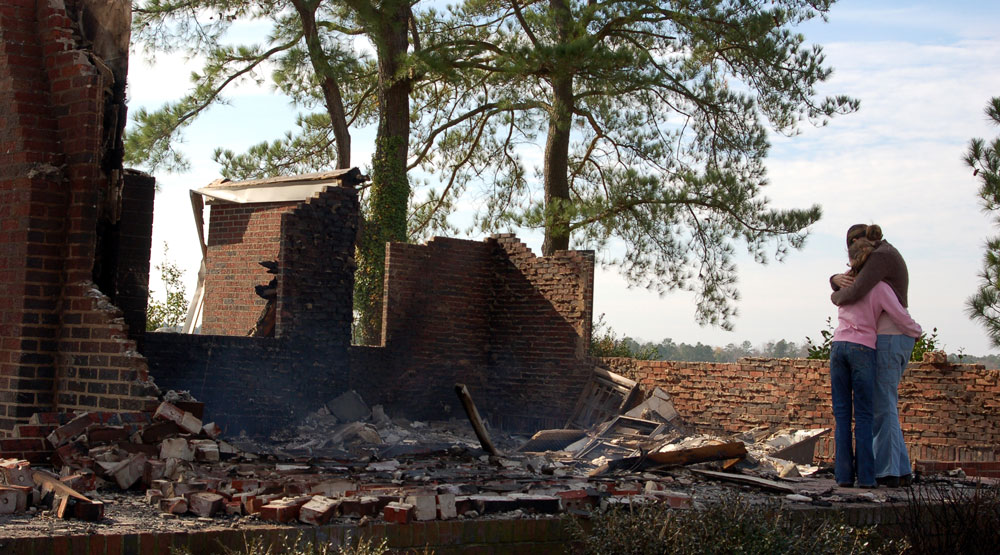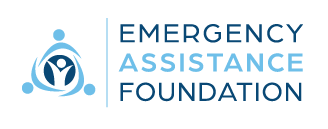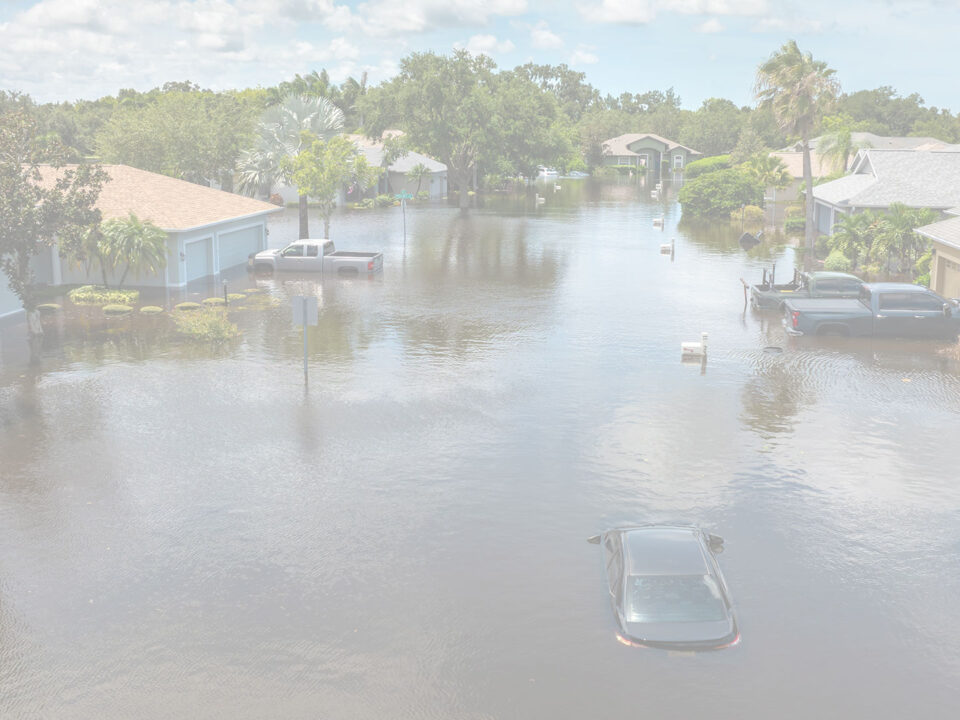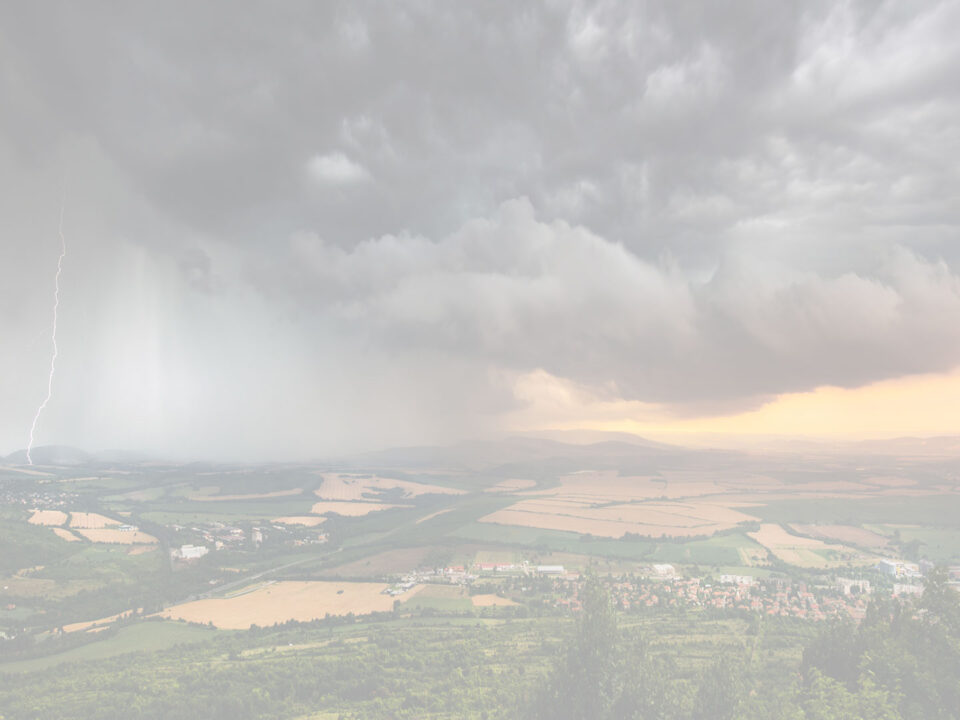
Domestic Violence Awareness
September 25, 2024
The Power of Giving Season for Relief Funds
October 24, 2024September 26, 2024
As natural disasters continue to increase in both severity and frequency, one of the most destructive threats communities face is the tornado. Tornadoes can develop rapidly, leaving little time to react, which is why understanding tornado preparedness is crucial for survival.
In this article, we’ll look at the impact tornadoes have on the community, share tornado safety tips to keep team members safe, and explain the importance of relief funds in the aftermath of a tornado.
The Impact of Tornadoes on Communities
Tornadoes are among the most violent storms on Earth, capable of generating wind speeds exceeding 300 miles per hour. These powerful winds can obliterate buildings, uproot trees, and hurl debris with deadly force. In the United States alone, an average of 1,200 tornadoes occur annually, primarily in regions known as Tornado Alley and Dixie Alley.
Tornado Alley, traditionally encompassing parts of Texas, Oklahoma, Kansas, and Nebraska, has long been the most tornado-prone area in the U.S. However, recent studies suggest that Tornado Alley is shifting eastward toward the Mississippi Valley, giving rise to a new hotspot known as Dixie Alley. This area includes states like Alabama, Mississippi, and Tennessee, which have seen a significant increase in tornado frequency and severity.
Recent Tornado Seasons: 2023 and 2024
The 2023 tornado season was particularly destructive, with over 1,190 confirmed tornadoes reported across the United States. For example, the March and April 2023 Central Tornado Outbreak and Eastern Severe Weather resulted in 33 deaths and $5.7 billion in damages, according to the National Oceanic and Atmospheric Administration (NOAA). The continued eastward shift of tornado activity is a cause for concern as more communities are exposed to these powerful storms. NOAA also estimated that the total damage for the 2023 tornado season exceeded $8 billion, making it one of the costliest on record.
In 2024, tornado activity has continued to be severe, with the season already witnessing more than 1,500 tornadoes as of August. Notably, out of these tornadoes, there have been 5 separate billion-dollar events and at least 40 lives lost. The Central and Southern Tornado Outbreak of April 2024 is estimated to have caused at least $1.7 billion in damage. Experts predict that the 2024 season may surpass the destruction seen in 2023, especially as the storm patterns appear to be shifting toward more densely populated areas.

The Role of Relief Funds in Tornado Recovery
The road to recovery after a tornado can be long and arduous. Tornadoes often destroy homes, businesses, and critical infrastructure, leaving survivors in need of immediate assistance. This is where employee relief funds become invaluable.
Establishing a relief fund before disaster strikes ensures that your organization is ready to help employees by tornadoes. These funds can provide financial assistance for emergency shelter, food, medical care, and rebuilding efforts.
Tornadoes are among the most devastating natural disasters, capable of causing widespread destruction in a matter of minutes.
How Establishing a Relief Fund With EAF in 2024 Can Help Your Organization Support Employees in Need
If you’re interested in making sure your team members are taken care of, but are unsure about how to launch an employee relief fund, we’re here to help!
In the aftermath of severe weather, a disaster, or personal hardship, your organization needs the ability to help impacted team members rebuild and recover from the potentially devastating impact. A relief fund can boost morale and allow your employees to donate and contribute directly to the support of fellow team members. Establishing a relief fund can alleviate the stress that disasters and hardship put on those within your organization and allow them to stay focused on recovering from the event.
If your organization is interested in launching a relief fund, consider establishing a fund with EAF today. As a financial first responder, we’re resourceful and fearless in ensuring that financial assistance reaches individuals in need, no matter the unique circumstances involved.
By establishing a fund with us today, your organization can assist members of your team affected by natural disasters and other hardships. Relief fund grants can help impacted individuals pull through difficult times and start on the path toward recovery. If you’d like to learn more about how your organization can help your team during crises, you can review additional information about how a fund works or contact us today. We look forward to helping you make a difference for those who need it most!

Tornado Safety Tips to Share with Team Members
Sharing safety tips for tornadoes is important in all areas where tornadoes occur, but it is especially crucial if you are in or near Tornado/Dixie Alley since the likelihood of a tornado forming is higher. It’s difficult to know when and where a tornado will form, so understanding when to take action and what to do are crucial parts of how to survive a tornado.
Here are some of the most important tornado safety tips to share with your team members to ensure they stay safe in the event of a tornado:
- Before
-
- Understand the risk of tornadoes in your area, especially in the Midwest and Southeast where they are most common
- Know the signs of a tornado, like rotating, funnel-shaped clouds, a loud roar, approaching clouds of debris, the color of the sky changing, and a strange quiet during or after a thunderstorm
- Pay attention to weather reports in your area so you know when conditions may cause a tornado to form
- Make a plan for taking shelter if a tornado does form in your area, including:
- Identifying safe places to take shelter, which should have no windows, like a basement or stairwell
- Creating an emergency tornado safety kit with bottled water, non-perishable food, blankets, medical supplies, medication, a flashlight, a radio, batteries, and more
- During
-
- Immediately seek shelter in the place you’ve previously identified as safe
- Cover your head and neck with your arms in order to protect yourself. You should also put clothing and furniture around or on top of you to shield yourself more
- Pay attention to alerting systems for emergency information and updates
- If you are outside or in a vehicle, don’t try to outrun a tornado. If you can’t get to a building, find a ravine or ditch, use your arms to cover your head and neck, and put any clothing or padding on top of you
- After
-
- Pay attention to local authorities and alerting systems for updates
- Stay clear of fallen power lines or broken utility lines
- Seek medical attention immediately if you are sick or injured
- Be careful during clean-up and wear the appropriate gear, like pants, gloves, thick-soled shoes or boots, and even face masks when necessary, as mold and other debris may be dangerous
Understanding these safety precautions for tornadoes can be the difference between life and death, which is why it is vital to share this information with team members so they know how to keep themselves and their families safe. There’s no way to avoid tornadoes, so it’s important to be prepared and know how to respond. That includes helping those who have been impacted by tornadoes to rebuild their lives. Establishing a relief fund ahead of time is one of the best ways to provide immediate assistance for team members impacted by tornadoes.




